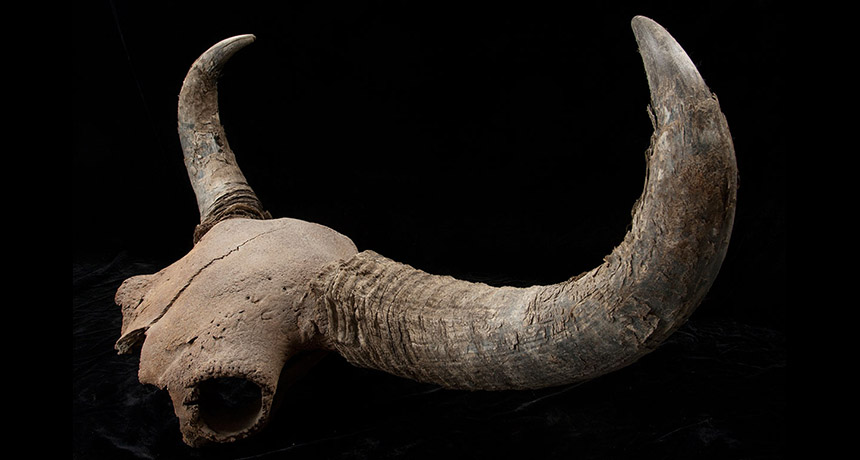Human route into Americas traced via trail of bison fossils

Genetic evidence and radiocarbon dating of bison remains unearthed in the Yukon, including this skull, suggest that humans could have traversed the Rocky Mountains around 13,000 years ago.
Image courtesy of the Yukon Government.







